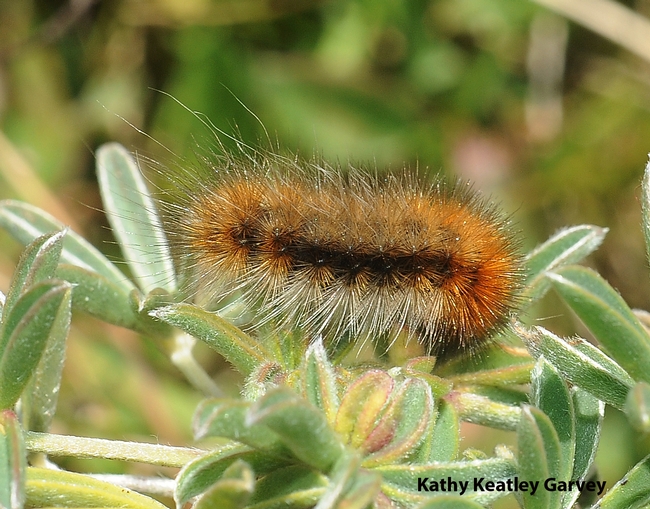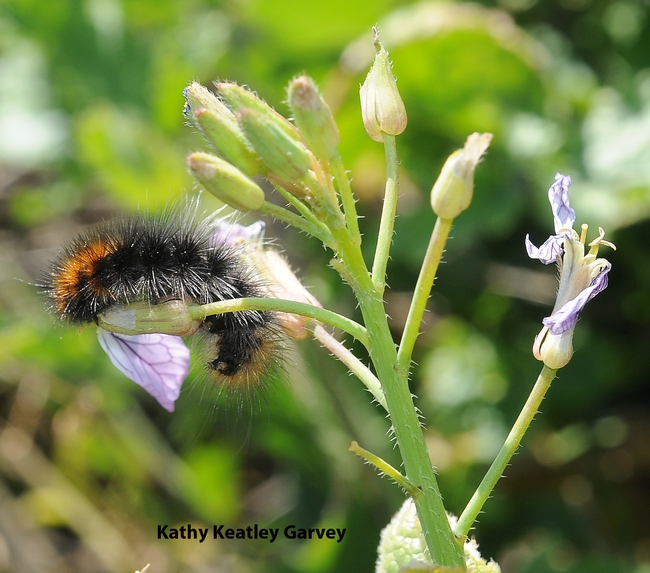If you're planning to hike the hills around Bodega Head in Sonoma County, watch out for the bears.
The woolly bear caterpillars, that is.
Last Sunday, with the temperature hovering around 70 degrees, the woolly bears were everywhere. They were munching on the gray-green leaves of Lupinus arboreus (yellow bush lupine), not yet blooming. We also spotted them on yellow mustard and wild radish, both members of the Brassicaceae family and both abloom.
If you look closely at these little caterpillars, they seem to be having a bad hair day. They look as if they just encountered a jolt of static electricity.
They're also known as the larvae of Ranchman's Tiger Moth (Platyprepia virginalis). Once they become moths, they do not resemble woolly bears any more.
Rick Karban, professor of entomology at UC Davis, has published a number of research papers on these herbivores.
"Platyprepia virginalis caterpillars are dietary generalists and feed on multiple host species within a single day," he wrote recently in Ecological Entomology. "We conducted field experiments to evaluate their performance on diets consisting of only their primary food, Lupinus arboreus, or diets consisting of L. arboreus plus other acceptable host species."
"We found that relative growth rates and rates of survival were higher when they fed on mixed diets compared to lupine only."
That feeding behavior we saw, too. A lupine lunch, with a touch of mustard and radish.
Attached Images:

Close-up of woolly bear caterpillar on yellow lupine on Bodega Head, Sonoma County. (Photo by Kathy Keatley Garvey)

Woolly bear caterpillar on wild radish on Bodega Head, Sonoma County. (Photo by Kathy Keatley Garvey)